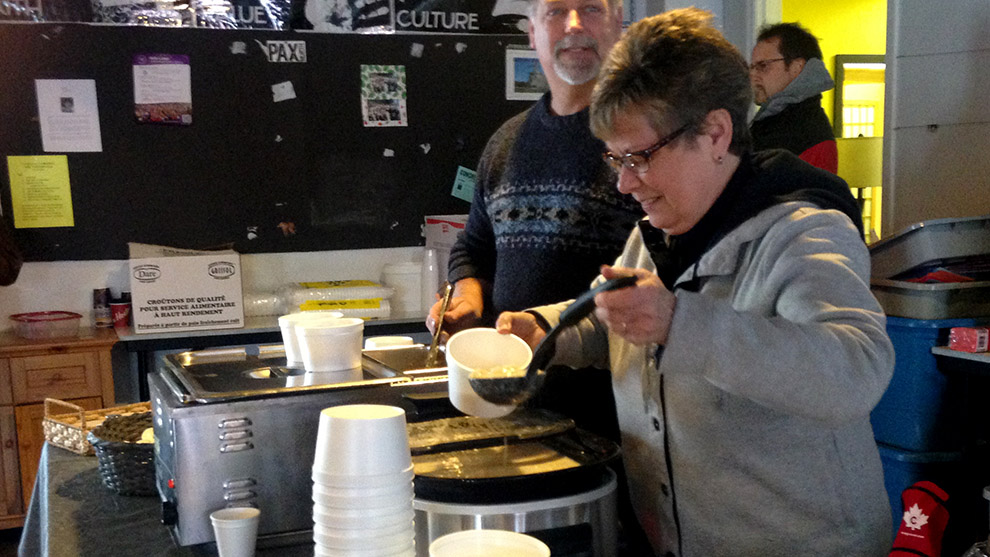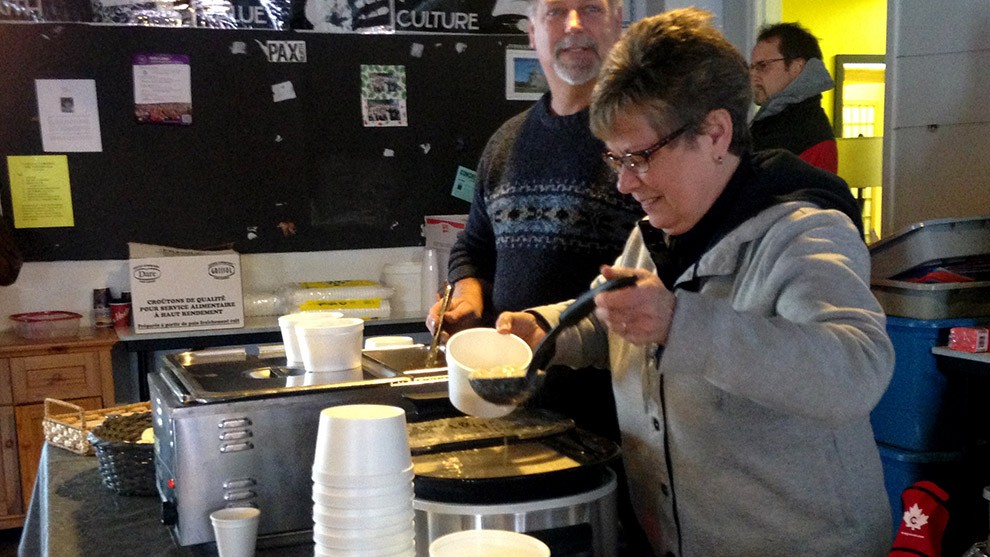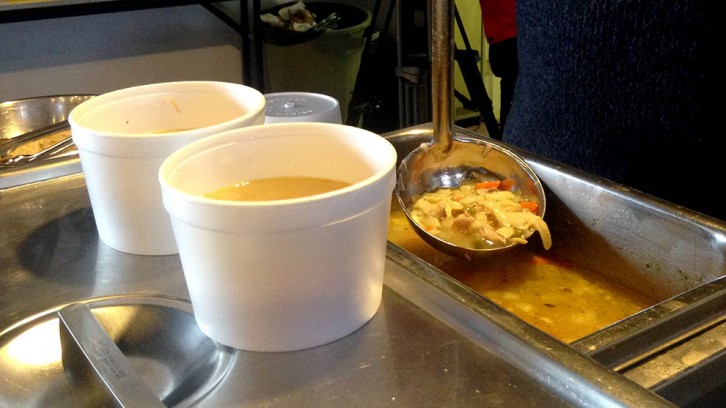Community
Increase in food prices will hit low-income earners hardest
Canadian households will spend up to $345 more on food in 2016: report

caption
Volunteers serve soup to guests at Souls Harbour Rescue Mission.
caption
Volunteers serve soup to guests at Souls Harbour Rescue Mission.High prices at the grocery store haven’t peaked. Experts say food prices will continue to rise in 2016.
“The cost of food has gone crazy,” said Ed Hollett, who has been working at Hope Cottage for 18 years.
Hollett said the rise in prices is driving up the number of people who can’t afford basic groceries.
The Food Institute of the University of Guelph released its annual Food Price Report in December. The report predicts food rates across Canada will rise anywhere from two to four per cent in 2016.
The increase could see households across the country spend up to $345 more on food over the coming year. The hike in food prices may mean stretching budgets for some, and turning to food banks for others.
Karen Theriault, director of communications at Feed Nova Scotia, said any increase in basic living expenses will be felt by the community.
“An increase of a dollar or two can literally make all the difference,” said Theriault. “People will turn a little more for support.”
Feed Nova Scotia distributes perishable and non-perishable donations to 146 meal programs and food banks across Nova Scotia.
Trickle effect
Souls Harbour Rescue Mission is a drop-in centre in Halifax’s north end. The group serves hot lunches during the week to local residents.
Susan MacDonnell, an intern at Souls Harbour, said the shift in food prices has a trickle effect, especially for those with a fixed or low-income.

caption
Serving soups in the winter helps Souls Harbour stretch its fresh produce, while giving guests a warm meal.“If cost of living — of any kind — goes up, it impacts how far the dollar goes. How much food is donated to food banks. How far Old Age Security pensions or Income Assistance payments can go, because they haven’t gone up,” said MacDonnell. “So we see guests coming to eat meals in an increased number.”
A rising number of guests at the drop-in centre means an increased need in donations. At Souls Harbour, donations and support come directly from the community.
“We just keep trucking. We’re blessed to have generous donors, but it’s a challenge,” said MacDonnell. “It means working harder to fundraise. It means working harder to produce the meals. It’s a strain, but we pull together.”
Hollett agrees that people in the community always come through with donations to support any increased demand at Hope Cottage.
“This is my 18th year at Hope Cottage,” said Hollett, “and it’s amazing how many good people support us.”
Theriault said Feed Nova Scotia always feels the need for support, but hasn’t felt the pinch of higher food prices – yet.
Low Canadian dollar
The Food Price Report found that grocery store prices increased in 2015 by 4.1 per cent, which was higher than anticipated. The report suggested the price of produce — fruits, nuts and vegetables — jumped last year because of Canada’s weak dollar.
The group predicted the low Canadian dollar, El Nino’s impact on the climate and consumer trends will be contributing factors to the increase in food prices in 2016.
About the author
Kathleen Napier
Kathleen Napier is currently completing her Master of Journalism (Data and Investigative) at the University of King’s College in Halifax. Special...
